MATTERS OF OBSESSION
Mohair – a fibre named desire
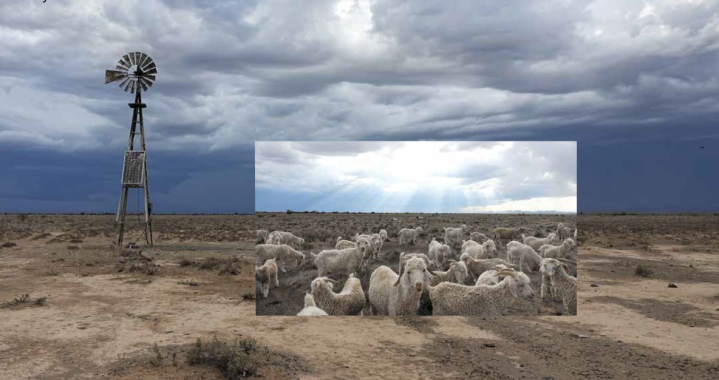
‘It starts with the land and the rain.’ It starts with a goat that travelled from Turkey to South Africa, back in the 19th century.
In The Story of a Goat, the 2019 novel by Indian writer Perumal Murugan, the author tells the tales of a black baby goat.
Once upon a time, a goat’s owner travels from one village to another, looking for “the right’” home for the little animal. He finally finds an old man and his wife, and gives them the goat, closing his gift with the words, “She is no ordinary kid.”
And so Poonachi the goat begins a new journey in the hands of the old villagers who devote their lives to taking care of the tiny creature.
Murugan’s novel is, in fact, much more than the story of a little goat – it is, with subtle but formidable strokes of satire, a commentary on the caste system and his country’s government.
But “watching” Poonachi’s experiences as the goat wanders through the farm and the village, is also a touching illustration of the deep connection the animal has with the farmers, and how intertwined their lives are; and maybe, it is, as well, the story of how we all reflect, impact and depend on each other – animals and humans.
That bond between animals and their owners, and more so, between goats and farmers – and the common dependence on each other for the well-being of all – isn’t dissimilar to the stories of those who, from the tooth-shaped mountains of Graaff Reinet to the burnt orange valleys of Prince Albert in the Western Cape, tend to Angora goats to produce the delicate fibre that is mohair.
According to Encyclopaedia Britannica, the Angora goat comes from the district of Angora in Asia Minor. The story of how the Angora goat ended up in South Africa differs slightly depending on the source.
It appears that in the mid-19th century, either Colonel Henderson or the Turkish Sultan Mahmud II sent on a ship to South Africa, a doe and 12 rams.
The story goes that the rams either died or were infertile, but the doe was already pregnant and gave birth to a male kid. The two goats settled in Caledon and soon after, more Angora goats were imported.
By 1912, “there were about 4.4 million Angora goats in South Africa”.
Today, our country is the largest producer of mohair in the world.
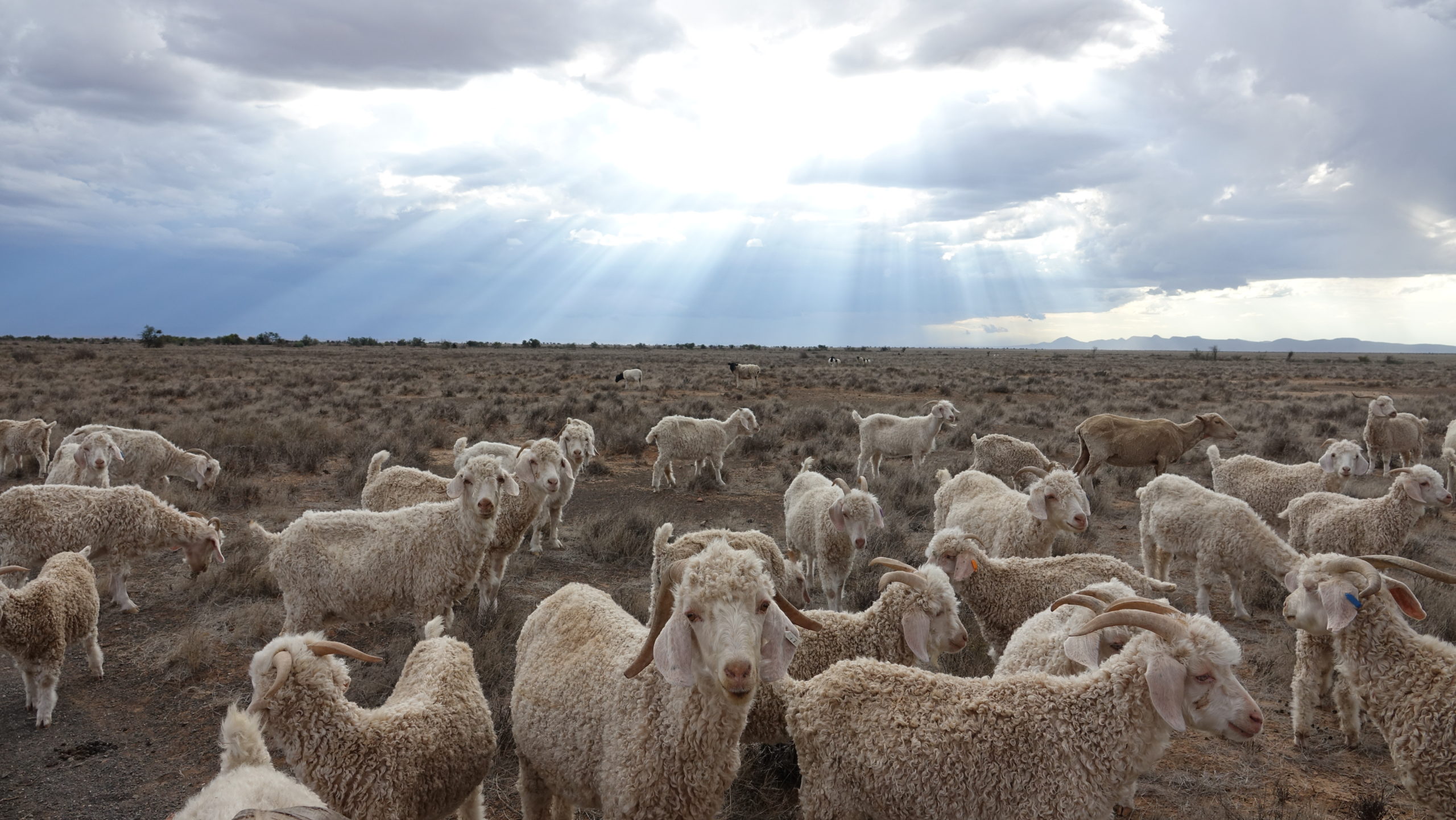
Photograph Emilie Gambade

Angora goat, Graaff Reinet (Photo by Emilie Gambade)
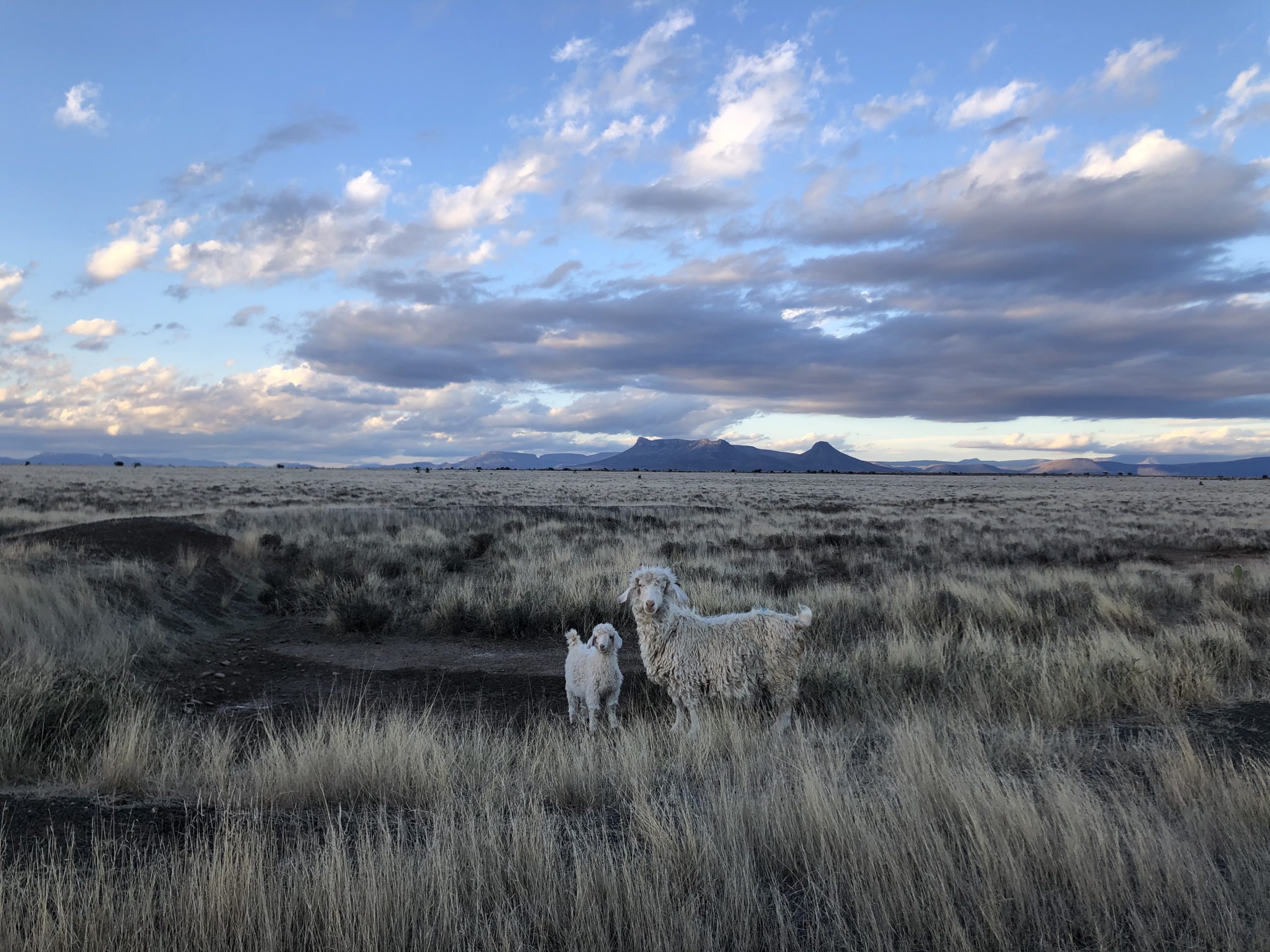
Angora goat and kid, Graaff Reinet (Photo by Emilie Gambade)
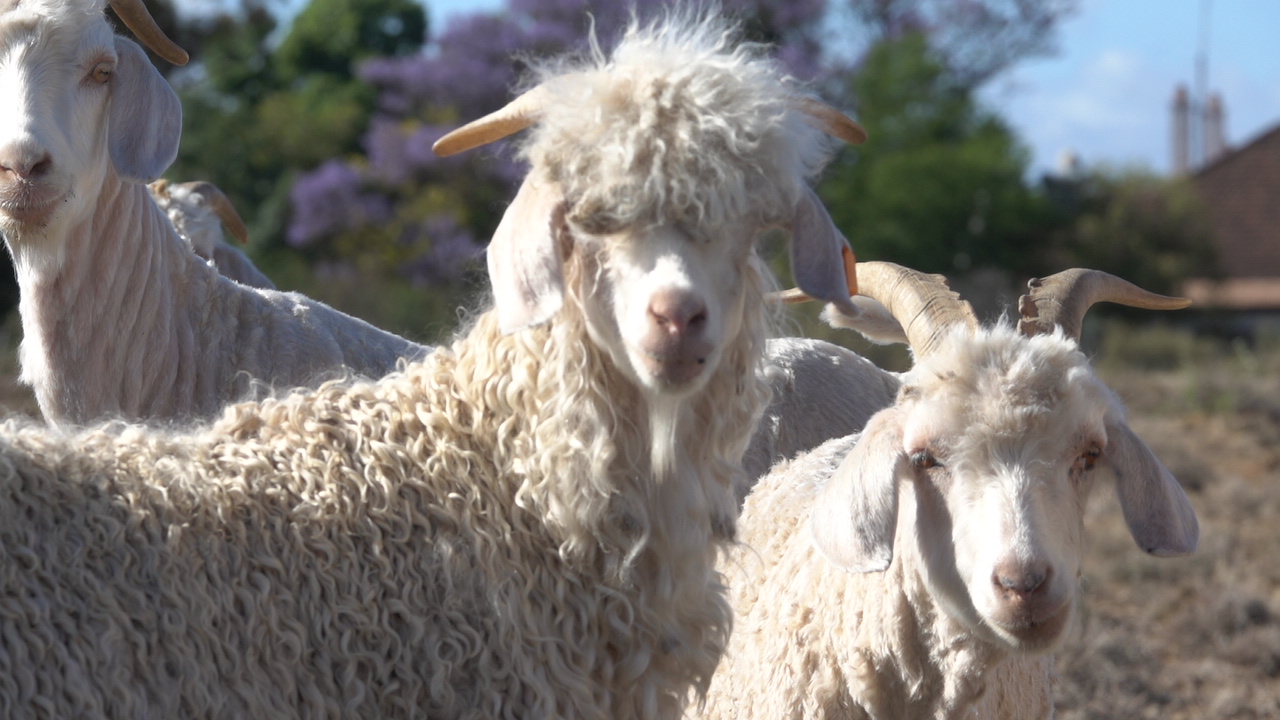
Photograph Emilie Gambade
According to Siobhan Momberg, Communications, PR & Marketing for Mohair South Africa, 47% of the world’s mohair comes from South Africa and about 16% comes from Lesotho – which is no small feat considering that we’re competing with the US (Texas) and Australia.
Dubbed “the noble fibre, and sometimes the diamond fibre”, mohair is a natural thread drawn from the fleece of the Angora goat. The curlier and shinier the thread, the better, although its softness isn’t its only positive feature – it is also durable and, just like cashmere, the knitted yarn feels like a warm whisper on the skin.
The more it is washed, the fluffier and lighter it becomes, and the yarns can be dyed in the richest colours and deepest hues that mirror its native Karoo landscapes – at once vulnerable and explosive.
Frances van Hasselt’s atelier is filled with such colours: on the walls, yarns in sea green, pale mauve, dusty pink or citrine hang next to petrol blue or terra cotta throws and rugs.

Frances van Hasselt’s atelier (Photograph Emilie Gambade)
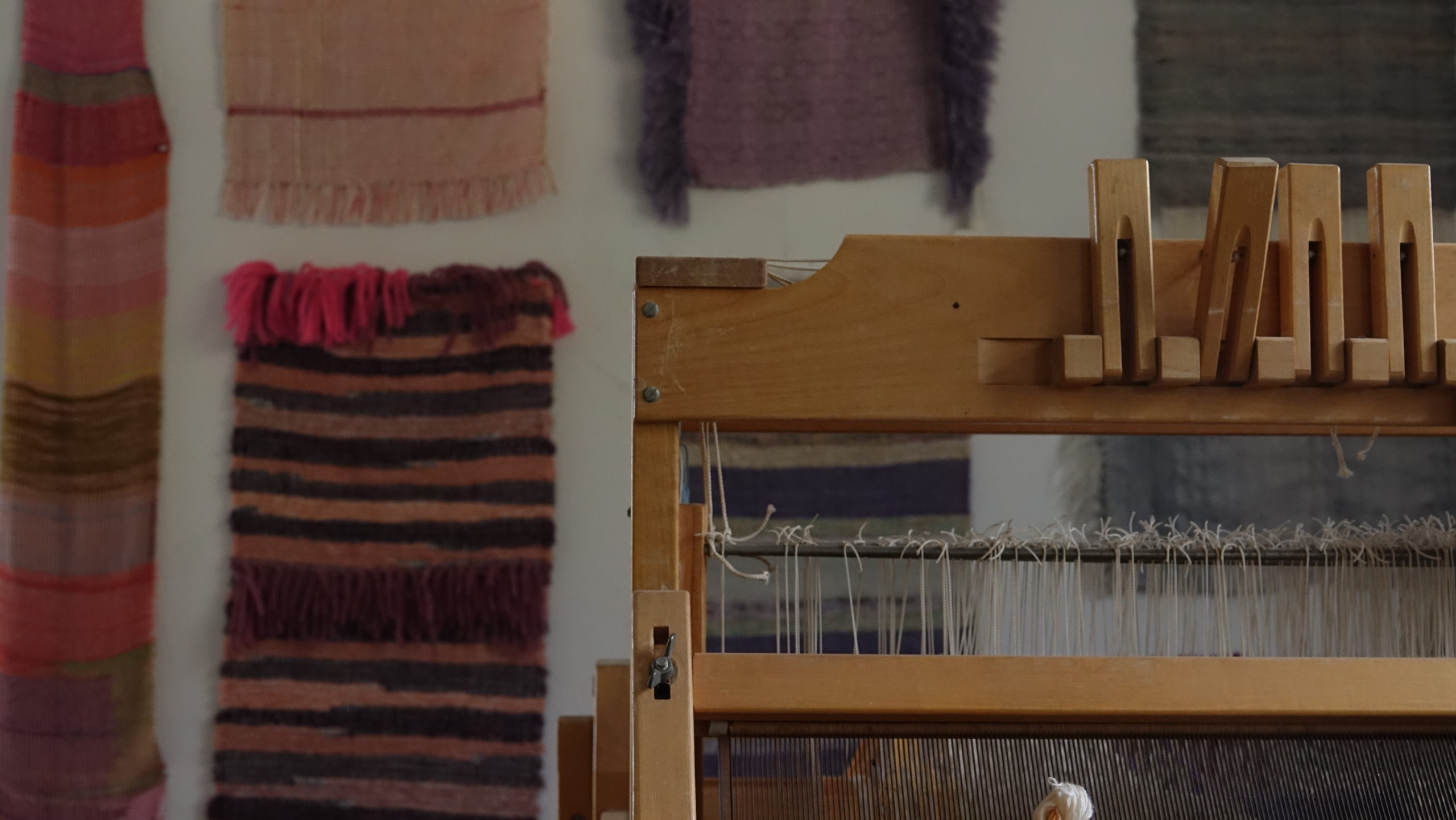
Frances van Hasselt’s atelier (Photograph Emilie Gambade)
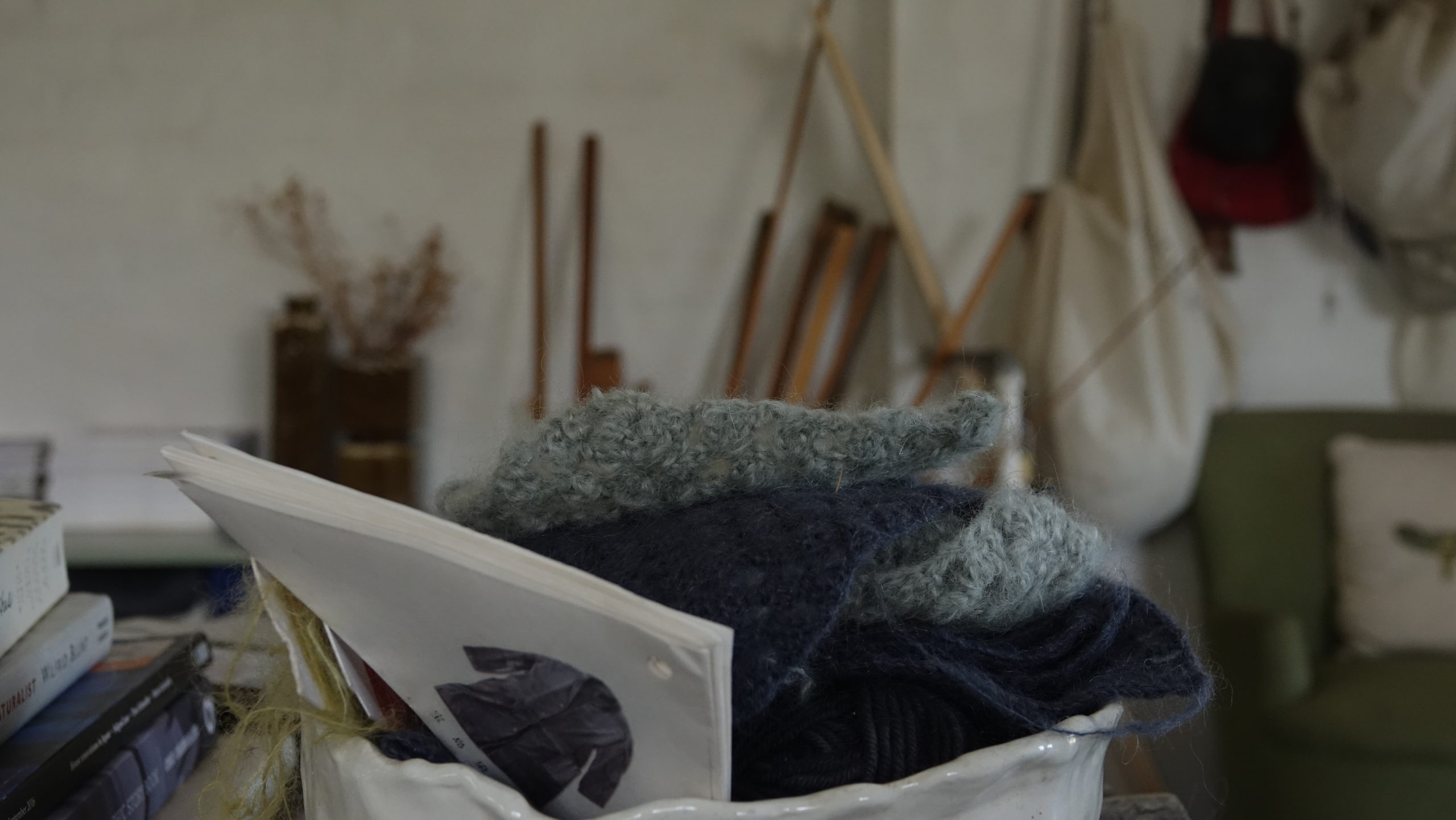
Frances van Hasselt’s atelier (Photograph Emilie Gambade)
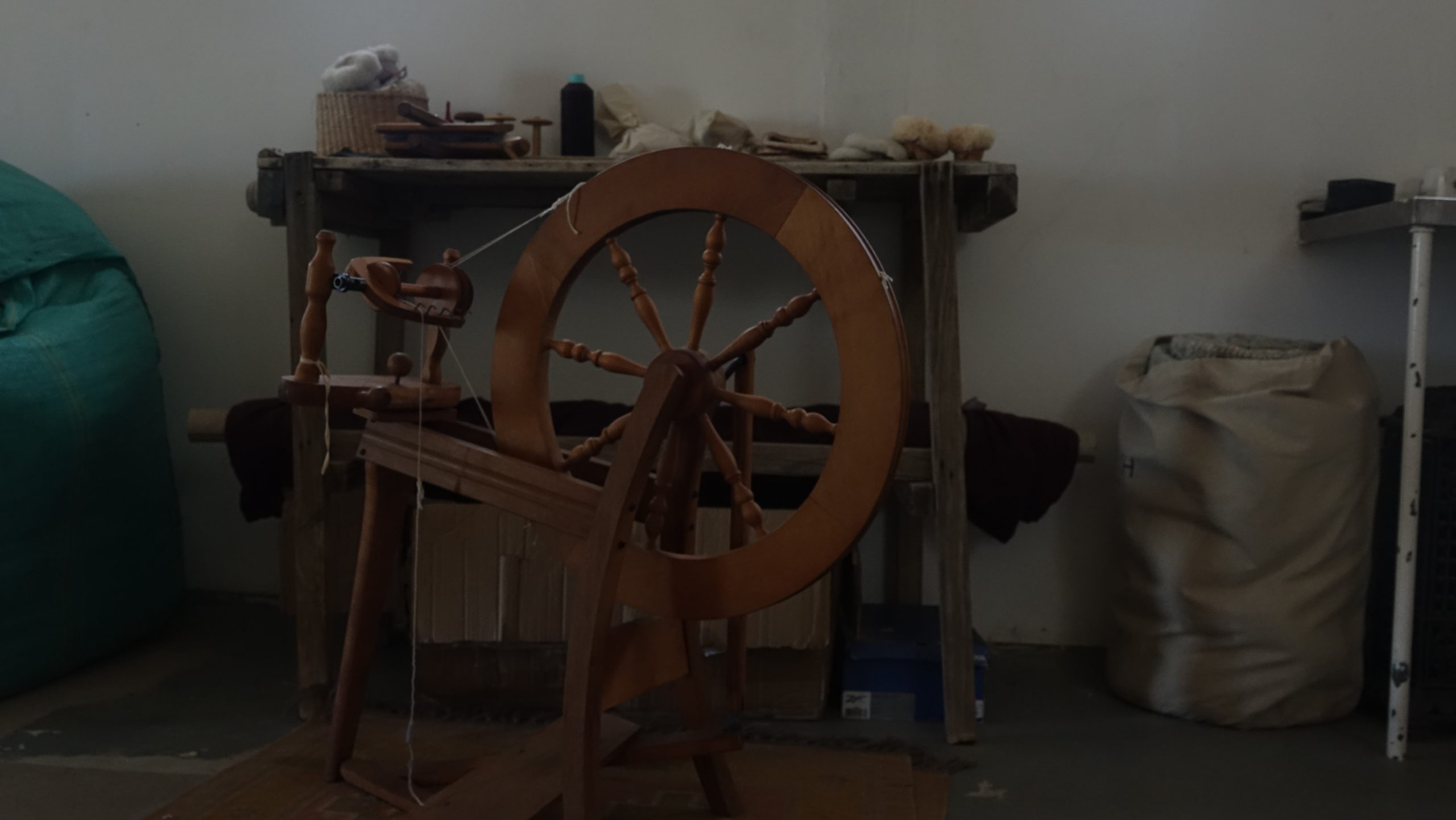
Frances van Hasselt’s atelier (Photograph Emilie Gambade)
Van Hasselt is the young designer behind the eponymous brand of hand-woven mohair rugs, knitwear and tapestries – with more products coming soon.
The incredible pieces carefully depict the geometrical landscapes of the surroundings; familiar patterns that echo the world outside but also resemble modern artworks. They are individually made on request, meaning that no one rug is the same as the other – the epitome of luxury.
Just like in Uderzo’s Asterix & Obelix, Van Hasselt fell into mohair like Obelix fell into a cauldron containing the magic potion: she stumbled into it at birth. She was born and grew up on the Karoo plains of Prince Albert and her family has been farming Angora goats for years.
“When I was little, growing up in Prince Albert, I was starry eyed about wanting to get out. My dad would patiently explain that if I was interested in the glitz and glamour of old TCM (Turner Classic Movies) documentaries or Hollywood movies I should spend some time with him in the veld to understand where everything comes from.’ “I always thought he had no idea what he was talking about when he would insist that it all starts with the land and the rain.”
After school, Van Hasselt travelled to Hong Kong to teach English and subsequently worked as an intern in a local fashion firm’s knitwear section.
It was “baptism by fire”, with her learning everything about an industry that had mastered the arts of productivity and efficiency.
Back in South Africa, she worked in fashion retail, something she describes as “brilliant because it just showed me exactly what I didn’t want to do and what the industry really is”.
Yet, after the “starry eyed stuff” had disappeared, mohair remained.
The light, raw, luxurious fibre was everywhere around her: on the goats tended by her parents and staff; on the floor of the shearing barn; in scarves and socks worn in the cold winters, or even just pieces of it stuck here and there on fences in the dry vastness of the Karoo.
And so she decided to study the fibre; the mohair-making process and the craftsmanship behind weaving.
She travelled to Japan for a residency with a company that still does spinning and knitwear, following the journey of the yarn, from the goat to the spinning machines some 14,000km away.
While there, she started to think about the kind of products she would want to create using mohair.
The company’s CEO said to her, “Never try to copy what anyone else does. If you try to replicate the way China, Italy or Japan produces, you will never be able to compete. We will always be the best at our specific way of doing things because it works for our unique environment and history.
“Instead, what you need to do is go home and look at what is totally unique to the social, economic, and environmental elements of the South African textile industry.
“When you combine all those things together, and you create something which is beautifully designed and high quality, then you can compete with anyone and no one can steal what you do, because no one will be able to produce like that.
“Go back home and put those things together. And then you have something special. What I’m doing is showing you what can be done in our way.”
Van Hasselt says, “It was such a simple lesson and it’s been (the) most profound advice. I came back and realised that we have the best mohair and processing houses in the world.
“In addition, we have thousands of skilled artisans who need an income and a platform to showcase their work.”
The comforting whir of the looms is not far off.
“Almost all of the world’s mohair comes to South Africa to be processed – even mohair from Texas. All of it comes here to be washed, carded and combed. It’s the very first step in making yarn… But it’s a huge skill.
“When you’re dealing with natural fibres, you need to consider intricate factors such as the humidity and how to blend various fibres together and not cause too much stress in the processing so that the fibres do not loose their natural character.
“It’s art. I’ve now become obsessed with making yarn,” she adds, a smile lighting up her face.
“It’s so interesting when you understand it. The goats get shorn and then the mohair gets classed… There are different lengths and qualities that are grouped together according to the specifics of the end product.
“We try to produce the mohair that the market wants. It all depends on what the brand wants at the end of the day, and that’s the trickle-down effect on essentially what animal you’re breeding,” she adds.
In South Africa, goats are usually shorn twice a year, most of the time by hand.
In 2018, a video commissioned by People for the Ethical Treatment of Animals (PETA), dubbed Groundbreaking Exposé: Goats Thrown, Cut, and Killed for Mohair, sparked a wave of controversy and knee-jerk reactions from mohair buyers and retailers like H&M or Inditex (Zara).
Since then, Mohair South Africa (MSA) has conducted an investigation into PETA’s claims; it also worked with Textile Exchange to establish the Responsible Mohair Standard, “to provide the industry with a tool to recognize the best practices of farmers; ensuring that mohair comes from farms that have a progressive approach to managing their land, practice holistic respect for animal welfare of the goats and respect the Five Freedoms of animal welfare.”
The South African mohair industry is “small enough… unique enough… luxurious enough and it’s got all these credentials,” she says. This, at a time when sustainability is on everyone’s radar. Yet, in terms of perception, mohair is not yet where cashmere is – a fibre named desire.
“We need more mohair. We need more people to farm mohair. Because (then) you have volume behind you.
“We have two processing houses who compete with each other… Now, because of the drought, there are fewer animals and also the animals’ hair grows slower… We need more mohair to ensure that both of those processing facilities function at their full capacity,” she notes.
So is South Africa’s mohair industry super niche and super bespoke?
“Or is it so small that it becomes irrelevant? Or too expensive?
“In my opinion, that’s the big thing… if you have more mohair, you have more opportunity to supply local designers; the processing houses are working more, there’s more mohair for more designers abroad to use too,” she says.
And the whole industry – the many students, farmers, artisans, craftsmen and women, buyers, designers, luxury brands working with mohair – can contribute and participate sustainably in the production of a unique fibre – at once light and warm, vulnerable and resistant, strong and beautiful, that holds in its fabric the inimitable resilience, hardships and moving beauty of the desert.
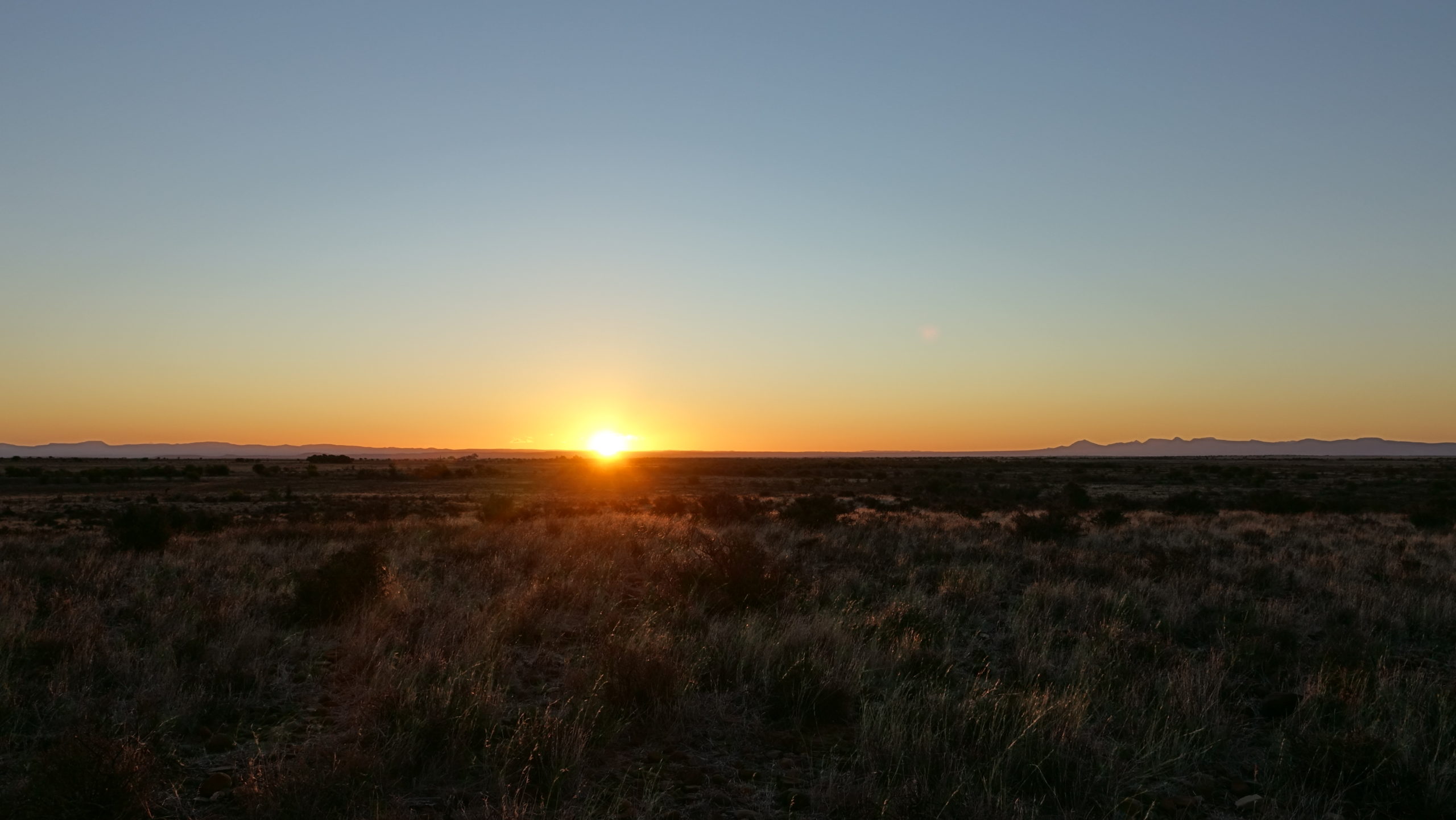
Photograph Emilie Gambade
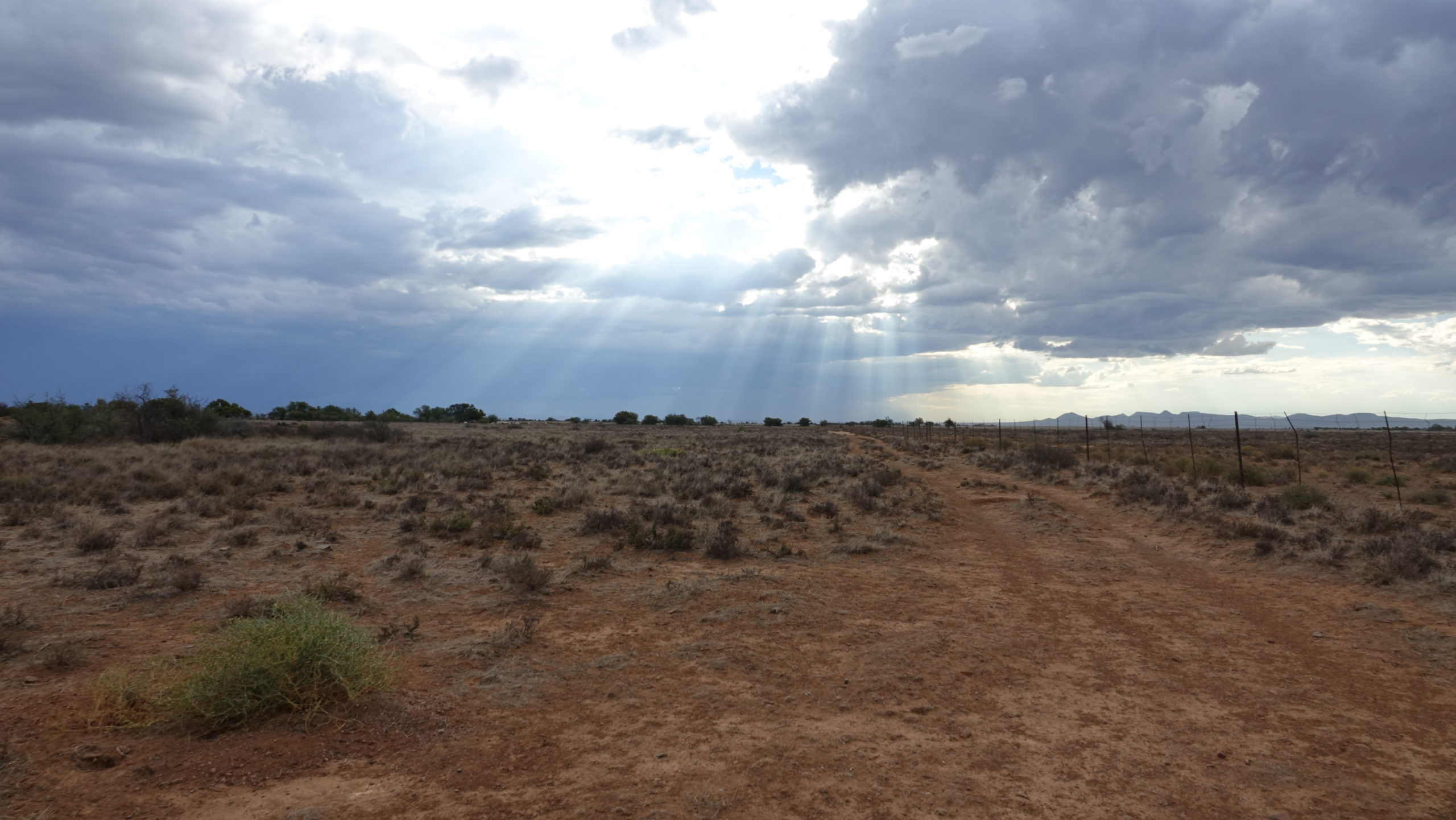
Photograph Emilie Gambade
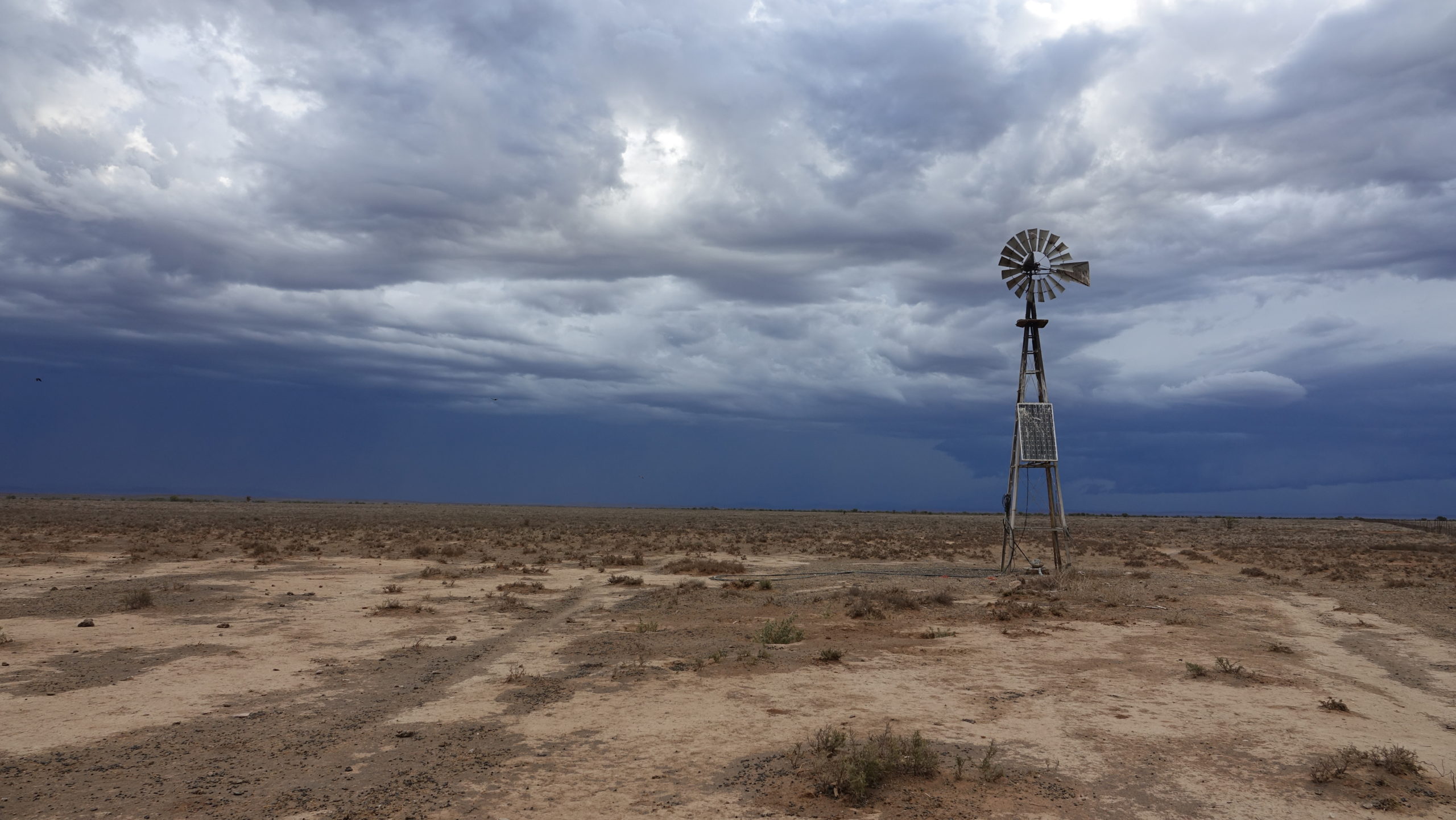
Photograph Emilie Gambade
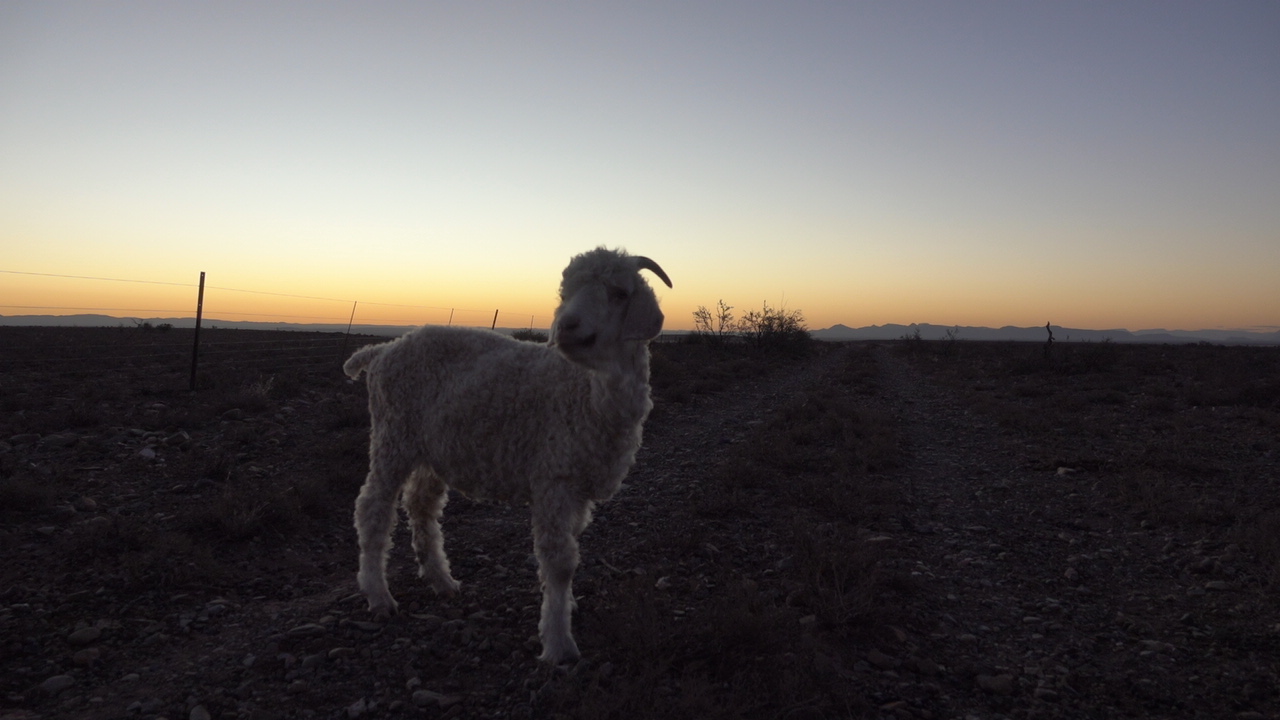
Photograph Emilie Gambade
But back to the goat – to the dry lands that stretch from Bushmanland to Griqualand and beyond, where aloes, crassulas, kapok bush (eriocephalus ericoides), stapelias and desert ephemerals survive the arid climate – Angoras roam peacefully, their fleece ever so slightly ruffled by the wind, farmers tend to their needs, trying to maintain the fragile balance between the animals and their habitat, drought after drought, the unpredictable cycle of life in the Karoo.
And together they write, year after year, ever since that day back in 1838, the story of how we all reflect, impact and depend on each other – animals and humans. DM/ML
















 Become an Insider
Become an Insider
Stunning photographs accompanying a lyrical account of the fascinating mohair story ! Thank you.
What gorgeous pictures. And so appreciated reading that wise advice given to Van Hasselt during her internship in Japan on what and how to create.
The Mosenthal family were actually the first to import and establish Angora Goats in South Africa.